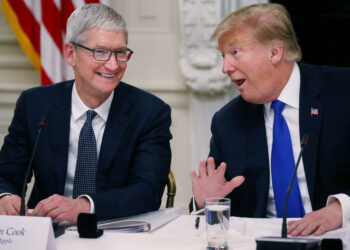By WIRED
In 2024, there will be a paradigm shift in employee-employer power and trust dynamics. It’s part of a generational redesign of work from being like a game of Tetris to becoming like a game of Roblox.
Growing up, I spent countless hours playing Tetris on my Nintendo Game Boy. There was something mesmerizing about slotting the flat-sided blocks together that fell from above. The design of the game was clean, precise, and simple. It gave the player a sense of order and control. I showed my 12-year-old son Tetris and asked if he wanted to play. “Why would I?” he quickly replied. “You can never beat the system.” And, in this sense, he’s right.
Organizations by design used to be a lot like a game of Tetris—top-down, hierarchal, with clear rules. Work had fixed boundaries around hours, physical locations, and roles. Importantly, these boundaries were mostly set by the employer, not the employee.
While I’m part of Generation Tetris (or Gen X), my son is very much a member of Generation Roblox (Gen Z). In his world, just like in the game of Roblox, there are endless possibilities of realms you can create and roles you can play. You can invent your dream job, build bridges or spaceships, take care of a farm, or live in a mansion on the waterfront. At its heart, Roblox is about self-authorship. But the feeling of control comes from being a creator, not organizing blocks. He loves Roblox because, in his words, “It’s my world and my rules.”
The world of Tetris and the world of Roblox are in many ways a powerful metaphor for a profound power and trust shift happening in the world of work. Gen Z (and Y and Alpha that will start to enter the workforce at the end of this decade) have little interest in a way of working designed like a game of Tetris. The rules, rewards, and reporting structures don’t make any sense to them. Given that, by 2025, 27 percent of the workforce in OECD countries will be Gen Z, it’s a pressing problem to fix. By 2030, the Roblox generation will be the majority, with over 58 percent of the workforce made up of Gen Z and millennials.
According to the World Economic Forum, almost two-thirds of Gen Z would prefer to work for themselves or a startup. 80 percent of Gen Z workers globally are looking to find a job that better aligns with their values. About half report they would quit their job if it interfered with their work-life balance. The solution proposed to these changing work dynamics is often flexibility. Yes, younger generations want or expect more flexibility, but focusing on where and when people work is missing a deeper paradigm shift—people’s relationship to organizations has been transformed.
In many ways, the design of Tetris reflected a “power over” way of thinking about leadership: “If I tell others what to do, they will follow.” You don’t get to invent rules and boundaries; they’re inherent in a linear, top-down system. Roblox, on the other hand, represents a “power with” dynamic. There are no corporate ladders to climb or hierarchies to navigate—unless you invent them. Engagement comes from the game design being collaborative, autonomous, personalized, and peer-driven.
According to a recent report by Gartner, employee engagement has 3.8 times as much influence on employee stress as work location. In other words, how people experience their everyday work—their feelings of involvement and enthusiasm—matters more in reducing stress than where they are doing their work. Gaming designers understand this, but most organizations don’t. In 2024, leaders will have no alternative but to accept that you can no longer play Tetris in a Roblox world.
WIRED has teamed up with Jobbio to create WIRED Hired, a dedicated career marketplace for WIRED readers. Companies who want to advertise their jobs can visit WIRED Hired to post open roles, while anyone can search and apply for thousands of career opportunities. Jobbio is not involved with this story or any editorial content.







Discussion about this post